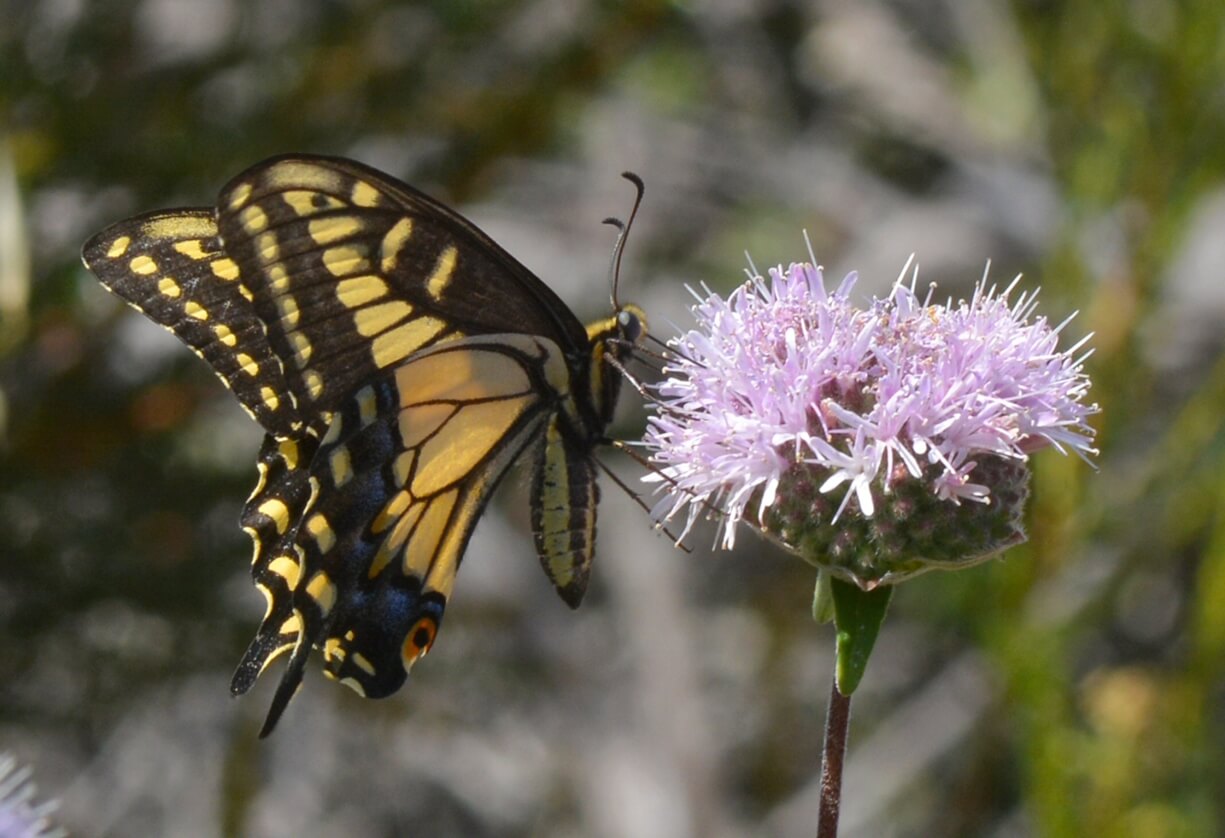I’d bet that we’re all pretty happy that the rainy season is over and cherishing the beautiful sunny days. With a good layer of mulch to help retain moisture in the soil, plus the warm days, plants are now putting on growth that can almost be measured day by day!
Over several years now, I’ve been creating a meadow in an area within my garden; and this year some nice patches of clovers have taken hold. It’s mostly a non-native rosy-colored clover, but it’s still good for the animals! While the new leafy growth persists, the deer browse the patch every morning, and once the flowers have set, bees of all sorts are buzzing around.
The time for planting natives is pretty much past, but now as the nights are warming, it’s time to get the summer vegetables in the ground. Though most of my gardening efforts are devoted to creating and restoring natural habitat, I do also grow lots of plants useful to humans. Tomatoes, beans, and peppers, as well as lots of herbs such as parsley, dill, and basil; many of these plants are providing resources for both humans and native creatures!
Plants for People and Animals
Basil flowers are very, very attractive to all sorts of pollinators. One species in particular, ‘African Blue Basil’ (Ocimum kilimandscharicum) grows into a small woody shrub that simply never stops blooming in my frost-free garden! I plant a variety of other species and cultivars not just for the pollinators, but so that I can make pesto, have fresh leaves for the Thai dishes I like to prepare, and Holy Basil to dry for Tulsi tea.
Whenever I pick parsley or dill, though, I make sure I’ve got my reading glasses on so that I can inspect the leaves for butterfly eggs or early instar larvae before picking them. These plants are as much for the caterpillars of the Anise Swallowtail (Papilio zelicaon) as for our own culinary pleasures.
This butterfly uses host plants in the carrot family (Apiaceae) and there used to be lots of native plants in this family growing in a number of different habitats; Yampah and Hog Fennels in the grasslands, Lomatiums and Angelicas in the shady woodlands, Cow Parsnips in wetland areas. I’ve seen Anise Swallowtail larvae occasionally on all these plants, but the one plant that really supports large numbers of larvae is one I wouldn’t dream of planting in my garden, which is right next to open space.
Common Fennel – Good or Bad Weed?
Common Sweet Fennel (Foeniculum vulgare) was brought to this country as a kitchen herb and is a plant that supports lots of life. My last garden was in a very urban area, where the Fennel is already established as a weed of open fields and roadsides. It has all the hallmarks of a very invasive plant – growing quickly to a large stature in the poorest of soils, in full sun or part shade, and it needs very little water.
There happened to be a large Fennel plant on the property, so I kept it and observed the life attracted to the resources it provides. All types of insects come for the pollen and nectar, plenty of seed is set and available to all sorts of birds, and the Anise Swallowtail seems to prefer this plant as a host for their caterpillars; in fact, here in Marin, the butterfly seems to have all but given up on native larval host plants!
The caterpillars are really interesting to observe; in the first instar they look like a bird dropping, and then in later instars, they become a beautiful light green color with black striping and yellow dots. These creatures have osmeterium, which are fleshy “horns” that can be everted as a defensive mechanism to startle would-be visual predators. When everted, the osmeterium also produce an unusual and rather unpleasant odor which is derived from an essential oil (Anisic aldehyde or Anethole) that many, but not all, carrot family plants contain. This secondary bio-chemical compound is necessary to illicit feeding by the larvae. A genera within the family, Sanicula, with three local and common species, are never used as host plants because they lack this bio-chemical compound, and the female butterfly knows this!

